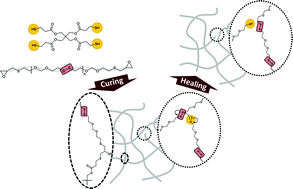Self-healing systems based on disulfide–thiol exchange reactions†
Abstract
New thermoset systems based on

- This article is part of the themed collections: Self-healing polymers and Polymer Chemistry 15th anniversary regional spotlight collection: Europe

 Please wait while we load your content...
Please wait while we load your content...